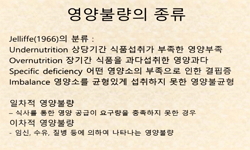The ability of a red tide species to take up nutrients is a critical factor affecting its red tide dynamics and species competition. Nutrient uptake by red tide species has been conventionally measured by incubating nutrient-depleted cells for a short...
http://chineseinput.net/에서 pinyin(병음)방식으로 중국어를 변환할 수 있습니다.
변환된 중국어를 복사하여 사용하시면 됩니다.
- 中文 을 입력하시려면 zhongwen을 입력하시고 space를누르시면됩니다.
- 北京 을 입력하시려면 beijing을 입력하시고 space를 누르시면 됩니다.



Nitrate uptake of the red tide dinoflagellate Prorocentrum micans measured using a nutrient repletion method: effect of light intensity
한글로보기https://www.riss.kr/link?id=A103296788
- 저자
- 발행기관
- 학술지명
- 권호사항
-
발행연도
2017
-
작성언어
English
- 주제어
-
등재정보
SCIE,SCOPUS,KCI등재
-
자료형태
학술저널
-
수록면
139-153(15쪽)
- 제공처
-
0
상세조회 -
0
다운로드
부가정보
다국어 초록 (Multilingual Abstract)
The ability of a red tide species to take up nutrients is a critical factor affecting its red tide dynamics and species competition. Nutrient uptake by red tide species has been conventionally measured by incubating nutrient-depleted cells for a short period at 1 or 2 light intensities. This method may be applicable to certain conditions under which cells remain in oligotrophic water for a long time and high nutrients are suddenly introduced. Thus, a new method should be developed that can be applicable to the conditions under which cells are maintained in eutrophicated waters in healthy conditions and experience light and dark cycles and different light intensities during vertical migration. In this study, a new repletion method reflecting these conditions was developed. The nitrate uptake rates of the red tide dinoflagellate Prorocentrum micans originally maintained in nitrate repletion and depletion conditions as a function of nitrate concentration were measured. With increasing light intensity from 10 to $100{\mu}E\;m^{-2}s^{-1}$, the maximum nitrate uptake rate ($V_{max}$) of P. micans increased from 3.6 to $10.8 pM\;cell^{-1}d^{-1}$ and the half saturation constant ($K_{s-NO3}$) increased from 4.1 to $6.9{\mu}M$. At $20{\mu}E\;m^{-2}s^{-1}$, the $V_{max}$ and $K_{s-NO3}$ of P. micans originally maintained in a nitrate repletion condition were similar to those maintained in a nitrate depletion condition. Thus, differences in cells under nutrient repletion and depletion conditions may not affect $K_{s-NO3}$ and $V_{max}$. Moreover, different light intensities may cause differences in the nitrate uptake of migratory phototrophic dinoflagellates.
동일학술지(권/호) 다른 논문
-
- The Korean Society of Phycology
- Jeong, Hae Jin
- 2017
- SCIE,SCOPUS,KCI등재
-
- The Korean Society of Phycology
- Wang, Hui
- 2017
- SCIE,SCOPUS,KCI등재
-
- The Korean Society of Phycology
- Lee, Soon Jeong
- 2017
- SCIE,SCOPUS,KCI등재
-
- The Korean Society of Phycology
- Giordano, Mario
- 2017
- SCIE,SCOPUS,KCI등재





 ScienceON
ScienceON






